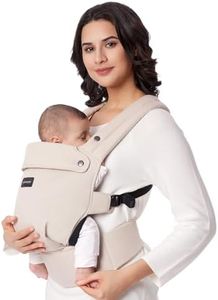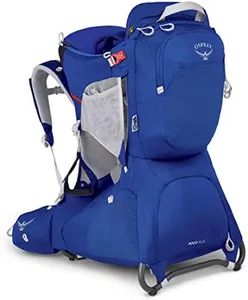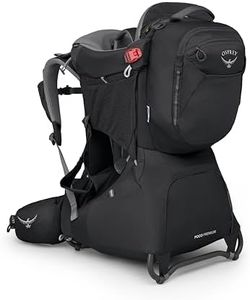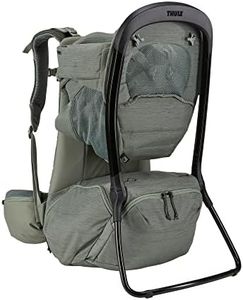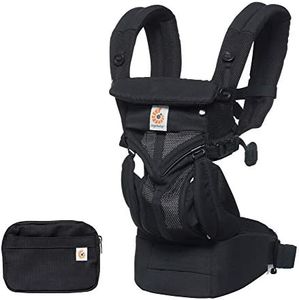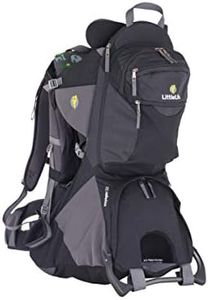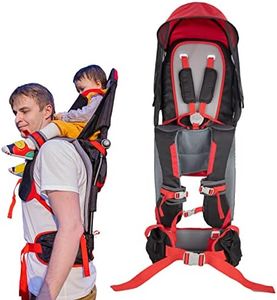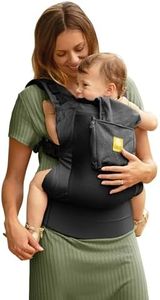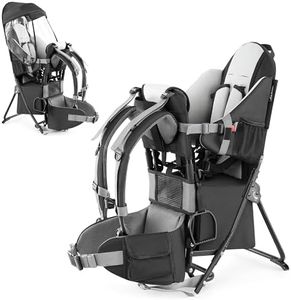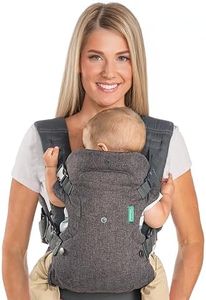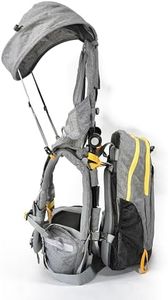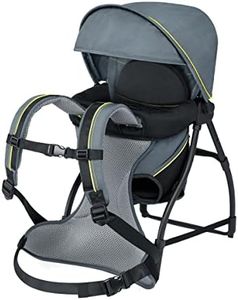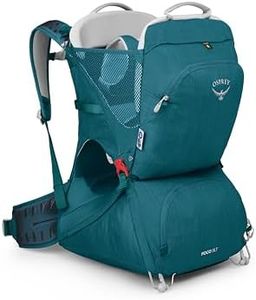We Use CookiesWe use cookies to enhance the security, performance,
functionality and for analytical and promotional activities. By continuing to browse this site you
are agreeing to our privacy policy
10 Best Hiking Baby Carriers
From leading brands and best sellers available on the web.Buying Guide for the Best Hiking Baby Carriers
Choosing a hiking baby carrier is all about balancing comfort, safety, and convenience for both you and your little one. You need a carrier that supports your baby securely, distributes weight evenly across your body, and includes features that make being outdoors easier. Ensuring a proper fit for your body type and considering the terrain and duration of your hikes are central to making the right choice. Carefully examining the carrier’s design and functionalities can help you have a comfortable and enjoyable hiking experience with your baby.Weight CapacityWeight capacity refers to the maximum weight the carrier can safely hold, including your baby and any gear stored in it. This is crucial for your baby's safety and your own comfort. Carriers with a lower weight capacity are suitable for younger infants, while those with a higher capacity accommodate older toddlers and provide longer usability as your child grows. Choose a carrier that matches your child’s current weight and provides some room to grow, considering how often you plan to use it over time.
AdjustabilityAdjustability means how well the carrier can be modified to fit different body shapes and sizes. This includes adjustable straps, hip belts, and back lengths. A highly adjustable carrier ensures that it can fit you comfortably and can be shared between caregivers of different sizes. If you’ll be sharing the carrier or want to optimize comfort on varied hikes, prioritize models with flexible adjustment options.
Comfort FeaturesComfort features are all about the padding, suspension systems, and ergonomic support for both you and your baby. Look for padded shoulder straps, a supportive hip belt, and breathable back panels. For the baby, a cozy seat and padded harness are important. When choosing, think about the lengths of your intended hikes: longer outings need extra comfort, while for short or infrequent hikes, simpler designs may suffice.
Sun and Weather ProtectionThis refers to features like built-in sunshades, rain covers, and wind protection. Such add-ons protect your child from harsh sunlight or sudden weather changes. For hikes in sunny or unpredictable climates, robust sun canopies and weather covers are a must, whereas for mostly shaded or short hikes, minimal coverage might be adequate.
Storage OptionsStorage options encompass the pockets and compartments available for carrying essentials like water, snacks, diapers, or small gear. Carriers with ample storage are great for longer hikes when you need to bring more supplies, while for short strolls, a few small pockets may be enough. Match your expected hiking duration and style to the amount and accessibility of storage.
Safety FeaturesSafety features include a secure harness for the baby, stable kickstand or foot support, and reliable buckles or fasteners. These ensure your baby stays in place and help prevent the carrier from toppling over when set down. Always prioritize carriers with sturdy, easy-to-use safety mechanisms, especially if you’ll be hiking on uneven or rough terrain.
Weight of the CarrierThe carrier’s own weight affects how burdensome it will feel, especially on longer treks. Lighter carriers are easier to manage but may have fewer features, while heavier carriers often have more padding or storage. Consider your physical condition and typical hiking distance: lighter models work well for short hikes or lighter loads, but for long outings, a slightly heavier, more feature-rich carrier may be worth the weight.
